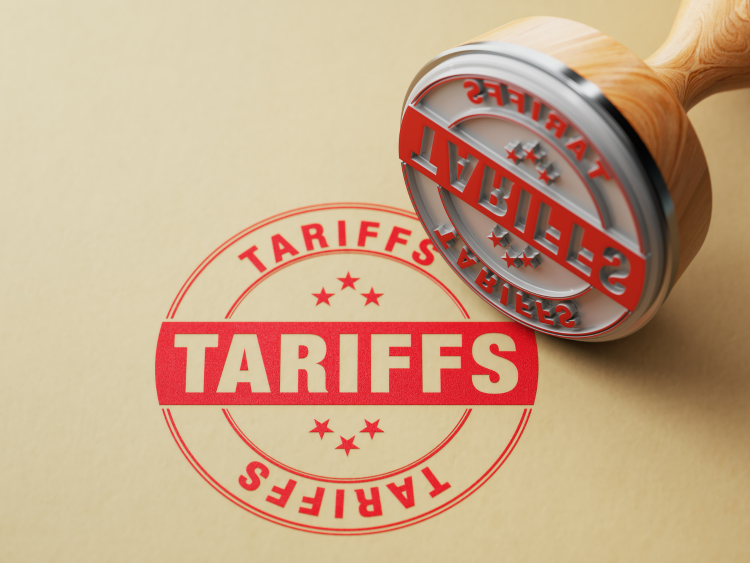Trade Cases

Malaysia Coated Sheet Made From China, Taiwan Substrate Circumvents Duties: Commerce
Written by Michael Cowden
June 7, 2021
The U.S. Commerce Department has determined that coated flat-rolled steel made in Malaysia from Chinese or Taiwanese substrate circumvents U.S. anti-dumping and countervailing duties.
As a result, coated product from Malaysia could be subject to duties of more than 200% if it is determined to be made from Chinese hot-rolled coil or cold-rolled coil, according to government notices dated Tuesday, June 7.
![]() That’s because Chinese coated flat-rolled steel is subject to anti-dumping rates of 199.43% and countervailing duties of as much as 39.05%, according to Commerce records published in the Federal Register.
That’s because Chinese coated flat-rolled steel is subject to anti-dumping rates of 199.43% and countervailing duties of as much as 39.05%, according to Commerce records published in the Federal Register.
Material coated in Malaysia and made from Taiwanese hot-rolled or cold-rolled substrate is subject to lower duties. That’s because Taiwanese coated flat-rolled steel is subject to a much lower anti-dumping rate of 3.66%, per Commerce.
To avoid duties, importers of coated flat-rolled steel from Malaysia must provide proof that the hot-rolled or cold-rolled substrate it was made from does not come from China or Taiwan, the department said. The rates for China will be applied if no certification is provided for the origin of the substrate.
“This is to prevent evasion, given that the rates applicable to the AD/CVD orders on CORE from China are higher than … the AD order on CORE from Taiwan,” Commerce said.
Coated flat-rolled steel refers to product such as hot-dipped galvanized, in which a hot-rolled or cold-rolled coil is run through a bath of molten zinc to prevent rust. Commerce officially refers to such products as corrosion-resistant steel products, or “CORE”.
The action this week followed a preliminary determination made on February 18, 2020, Commerce said.
The U.S. has imported only very limited quantities of coated products from Malaysia over the last two years, according to Commerce figures.
When it comes to hot-dipped galvanized, for example, the U.S. has imported no material from Malaysia since October of last year.
Separately, Commerce determined that coated flat-rolled steel from South Africa made from Chinese substrate is not circumventing U.S. duties “at this time,” according to a separate entry in the Federal Register.
The U.S. initially filed duty circumvention cases against coated flat-rolled steel from Vietnam in the waning days of the Obama administration in 2016. Those cases set a precedent for similar trade actions filed against other countries during the Trump years.
By Michael Cowden, Michael@SteelMarketUpdate.com

Michael Cowden
Read more from Michael CowdenLatest in Trade Cases

Price: Expect new trade shocks as Trump’s ‘reciprocal’ tariff negotiations continue
President Trump cast a wide net with the proposed, reciprocal tariffs. The negotiating stage will be critical to determining the success of his strategy. And for those suffering tariff whiplash, don’t expect the pace of change to slow down just because the reciprocal tariffs are entering a negotiating phase.

SMU Survey: Less support seen for Trump tariff policies
Meanwhile, an increasing number think it's too early to say whether the penalties are going to bring more manufacturing to the US.

CRU: USW seeks exclusion for Canada from Trump’s tariffs
The union is also urging stronger enforcement against countries such as China which break trade rules, and a coordinated Canada-US strategy to protect union jobs across the North America

Price on trade: A lot happened last week – and it wasn’t all about tariffs
Should foreign investment be allowed to reshape the American steel Industry? Not to be lost in the recent on-again-off-again tariff frenzy, Nippon Steel’s proposed takeover of U.S. Steel has also found itself in President Trump’s crosshairs when it comes to trade and industrial policy. Nippon Steel initially announced its nearly $15-billion bid for U.S. Steel […]

Trump signs executive order aimed at making US shipbuilding ‘great again’
President Trump on Wednesday signed an executive order meant to breathe new life into American shipbuilding and curb Chinese dominance in the sector.
